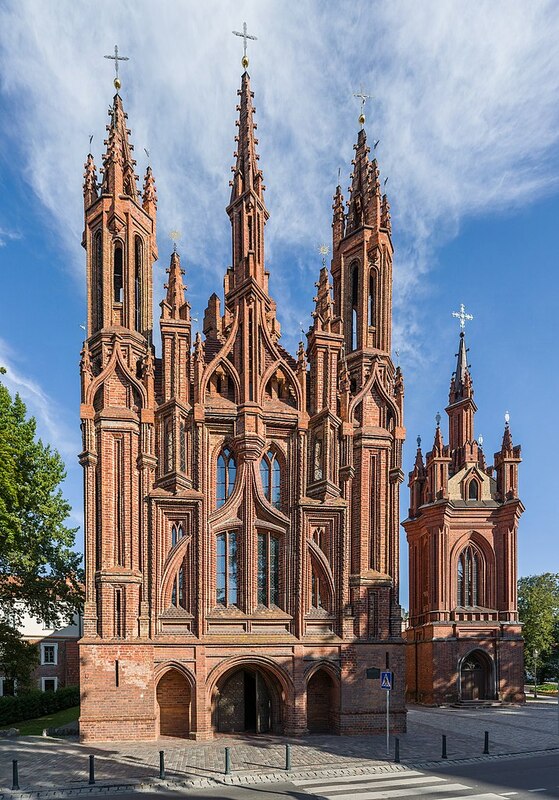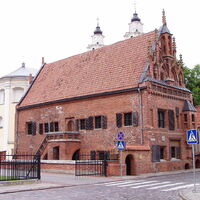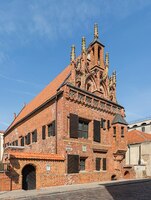Brick Gothic in Lithuania
Type:
Churches,
Secular architecture
Date:
church of St. Anne, Vilnius, 1495–1500,
House of Perkūnas, Kaunas, 1441
Location or Findspot (Modern-Day Country):
Lithuania
Description:
The red-brick church dedicated to St. Anne in Vilnius at the end of the fifteenth century replaced an earlier church in wood with the same dedication. The new church was built for the Grand Duke of Lithuania, Alexander I Jagiellon, between 1495 and 1500 (he also became king of Poland in 1501). His duchy was the largest state in Europe, much larger than the current country of Lithuania. The Teutonic Knights, a German military order originally based in Jerusalem, had been fighting polytheism in Lithuania since the thirteenth century. A Grand Duke was finally baptized in 1386—the last European ruler to become a Christian.
The cult of St. Anne, the mother of Mary, was becoming widespread in the fourteenth century, and the daughters of the Grand Dukes often chose that name when they were married. The Observant Franciscans (called Bernardines in eastern Europe) promoted Anne's cult, and a Bernardine monastery and church of St. Francis are adjacent to the church of St. Anne.
The three-tower church facade combines late French Gothic stylistic features (ogee arches, narrow windows, and crocketed cpinnacles associated with the Flamboyant phase) with brick, the typical building material in late medieval northern Europe because of the lack of stone. The bell tower to the south, which echoes the facade, dates to the nineteenth century.
Brick Gothic was also used for secular architecture in Lithuania. In Kaunas, a town founded in 1408, the so-called House of Perkūnas (or Perkūno Namas, named for the Lithuanian god of thunder) was built as the residence and warehouse of a merchant of the Hanseatic League in 1441. This loose network of merchants, which had a virtual monopoly on trade and associated privileges in the Baltic and North Seas, likely contributed to the wide diffusion of brick Gothic around the region.
The cult of St. Anne, the mother of Mary, was becoming widespread in the fourteenth century, and the daughters of the Grand Dukes often chose that name when they were married. The Observant Franciscans (called Bernardines in eastern Europe) promoted Anne's cult, and a Bernardine monastery and church of St. Francis are adjacent to the church of St. Anne.
The three-tower church facade combines late French Gothic stylistic features (ogee arches, narrow windows, and crocketed cpinnacles associated with the Flamboyant phase) with brick, the typical building material in late medieval northern Europe because of the lack of stone. The bell tower to the south, which echoes the facade, dates to the nineteenth century.
Brick Gothic was also used for secular architecture in Lithuania. In Kaunas, a town founded in 1408, the so-called House of Perkūnas (or Perkūno Namas, named for the Lithuanian god of thunder) was built as the residence and warehouse of a merchant of the Hanseatic League in 1441. This loose network of merchants, which had a virtual monopoly on trade and associated privileges in the Baltic and North Seas, likely contributed to the wide diffusion of brick Gothic around the region.
Relevant Textbook Chapter(s):
11
Image Credits:
Wikimedia Commons





